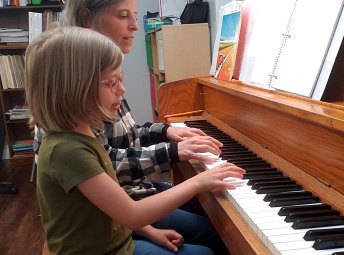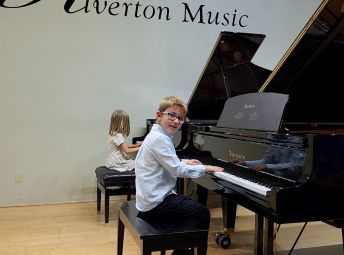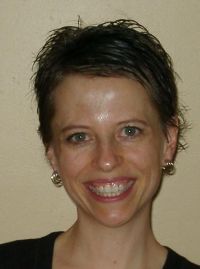About Lessons
Group lessons: Simply Music Piano is sucessfully taught in a group setting of 2-4 students. These lessons last 35 to 45 minutes depending on size. Groups are high-energy, engaging, and fun. We require a parent to attend every lesson.
Private lessons: Private piano lessons last 30 minutes. We require a parent to attend every lesson.
First, let's identify common problems that piano teachers often face:
Students who…
*Do not practice much
*Only practice the things that are easy
*Do not practice exactly what has been assigned.
*Forget the content of what was taught in the lesson.
*Are unmotivated to practice.
*Wait 2-3 days after their lesson to begin practicing, loosing momentum and forgetting much of the content from the lesson.
Studies show that we forget:
42% of new information 20 minutes after it’s introduced,
56% after 1 hour later,
64% after 9 hours,
and a whopping 67% of the new information is lost one day later.
(*see Ebbinghaus Forgetting Curve. Research performed by German psychologist Herman Ebbinghaus)
This study and many others show us Information is lost exponentially in a very short period of time! The studies show that the best times to review new information for maximum memory recall is immediately after it’s first introduced. The second best review is 24 hours later. Piano students typically leave their lesson and wait 2-3 days to start practicing because they know they have a whole week to get ready for their next lesson.
The result is unfortunately, much slower progress!
How do we address these common problems?
Introducing….
***Piano Lessons With a Twist – The Power of 2***
The Power of 2:
Students receive formal weekly lessons in class. In their first year of lessons, students will often leave their lesson knowing how to play a new classical piece (for example), a new accompaniment project, and a new variation on an older piece they know, or other projects. Remember, the two best times to review new information is immediately after and then 24 hours later.
The Power of 2:
1) Immediately after their lesson: Our students review the new content from their lesson (new accompaniment or variation, for example) immediately after their lesson- even in the car on their practice pad, and before bed time. It only takes a few minutes.
The new piece of music, such as a Classical piece, is reviewed step-by-step from a video within 24 hours after their lesson. (This is Power Practice number 1)
2) The next day and just after the 24 hour period, students then get online for a brief 5-15 minute session to review their progress with their teacher and receive any additional support that may be needed. This post-lesson online session is included in your monthly tuition. (This is Power Practice number 2).
Using the Better Practice App can be an alternative way to achieve the same result for Power Practice number 2 (above). Students can video record themselves playing the new projects and their new Foundation piece the day after their lesson. The instructor can review and provide feedback within the app that same day. This alternative may be discussed with the instructor.
The Power of 2 ensures each student’s success. It provides a one-two punch for maximum results and provides the support they need to feel confident in their practice for the rest of the week. Students retain and remember more and make rapid progress. If they remember more, they feel encouraged. If they feel encouraged, they are likely to be more willing to practice the rest of the week! Of all the practices that a student is going to do, these two will be THE most critical.
Students quickly develop a large repertoire of fantastic sounding music they can play. These are their playlist of piano pieces they know by heart. Students keep these pieces alive throughout the program. After 3 months they will know at least 10 or more. After a year, they often know 30-40 or more pieces of music. Included in the monthly tuition is a periodic online or in person session in which these playlist pieces will be checked to ensure they are healthy and alive.
What is the cost?
*Monthly tuition will vary depending on whether the classes are group or private
*Home materials are purchased through the Simply Music website. Foundation levels 1-9 cost about $35 per level.
Purchase of home materials (books, etc...) will average about $15 per month.
Equipment needed at home:
1) Camera above the keys for the online portion: A phone or webcam.
Overhead stand (or this stand) that sits on the piano for cell phone or webcam
Webcam that can be mounted on a tripod or a phone with a tripod mount.
A tablet may also work with this setup.
Examples (click to enlarge):
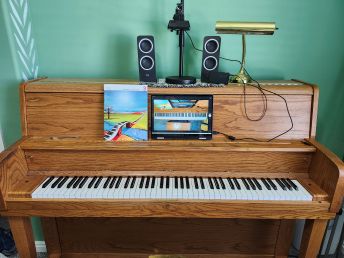
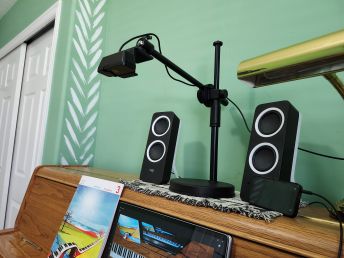
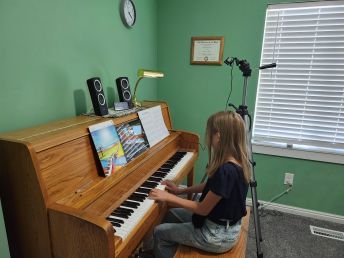
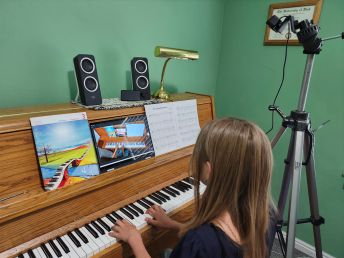
2) A larger screen device that sits on the music desk of the piano (where music books to read are placed):
A tablet or laptop (if it folds backwards) works well. It allows a student to see the instructor at all times and allows the instructor to see student's face. A music stand or a tall stool is a good spot for a laptop if that is needed or preferred.
3) Practice pad that is mounted on a board. The keyboard image can be printed at home when level one materials are purchased. The Practice Pad will be brought to lessons and used at home.
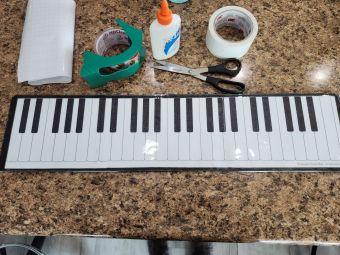
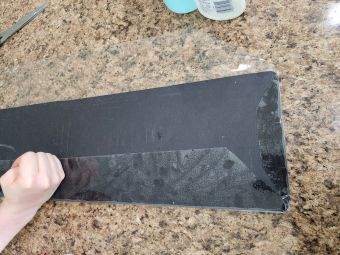
The board can be purchased at Hobby Lobby or a similar store. I used a rigid foam board, 20" x 30" x 7/16" thick, cut with an X-Acto knife.
4) Audio files from Simply Music website downloaded to an MP3 player designated only for piano practice that a student always has access to (see Amazon). A parent's phone works well also.
Setup for first lesson:
Install Zoom on all devices. In Zoom, under audio settings "Original sound for musicians" needs to be selected on the large screen device. If using a phone for the above keyboard camera, the microphone needs to be muted in Zoom and the speaker volume turned all the way down to avoid feedback.
Please note that Zoom on Chromebooks does not have the option for "Original sound for musicians" and therefore will not work for online lessons.
The Better Practice App currently has limited functionality with iPhones and iPads. Recording for post lesson check-ins only works in Firefox and Chrome on Android devices, Windows PCs, or Apple desktop/laptop computers.
